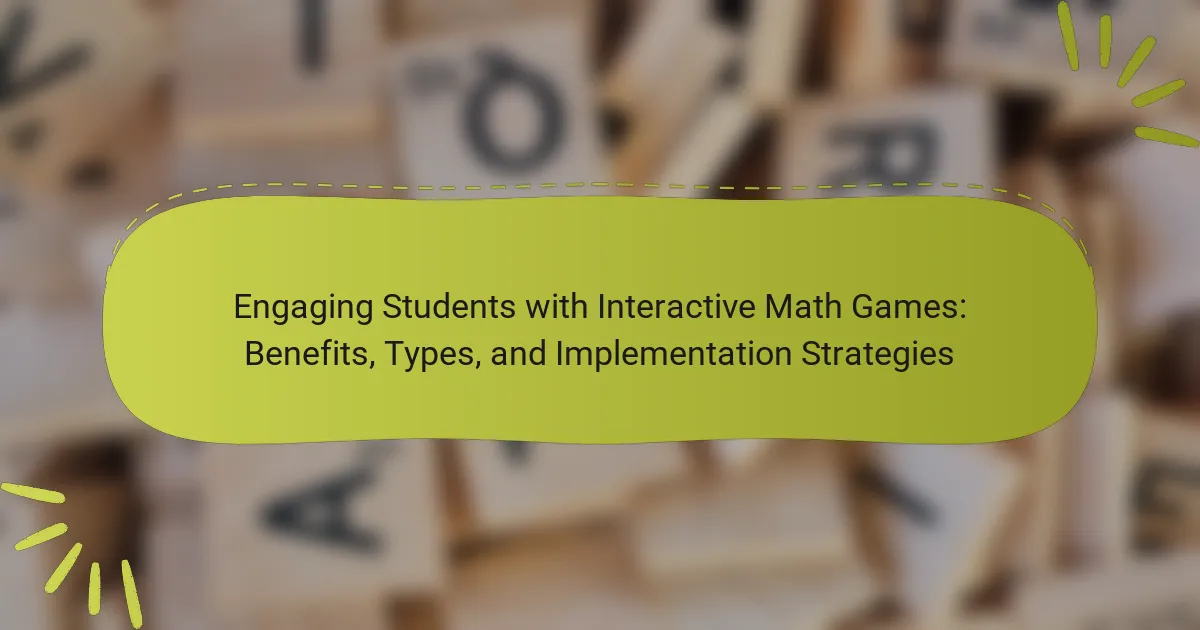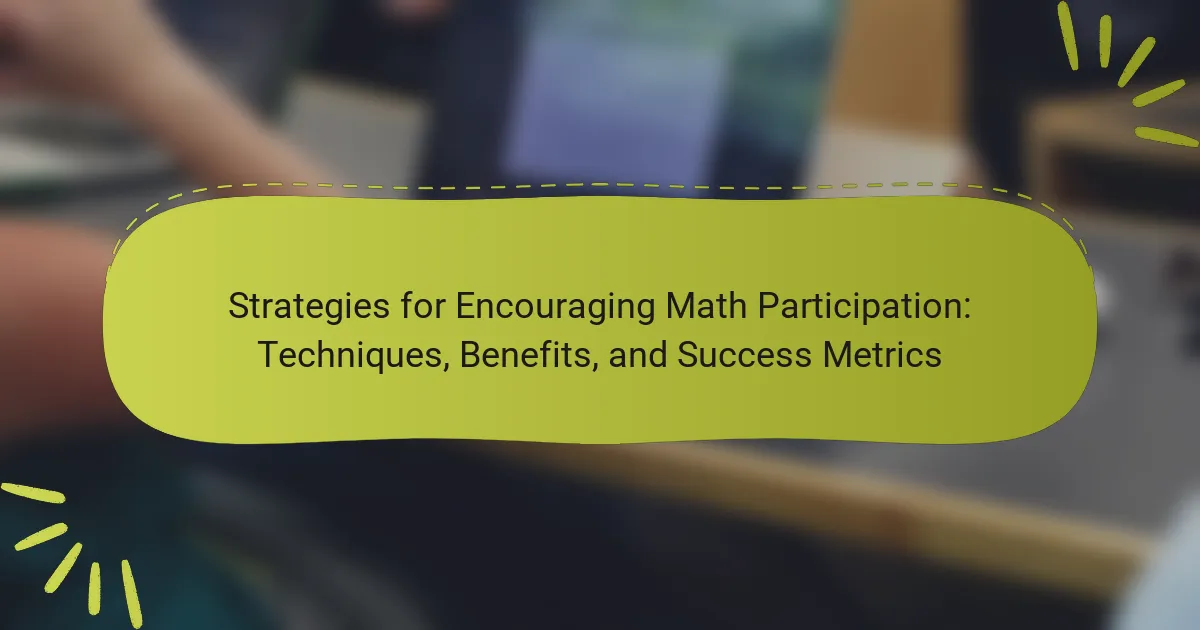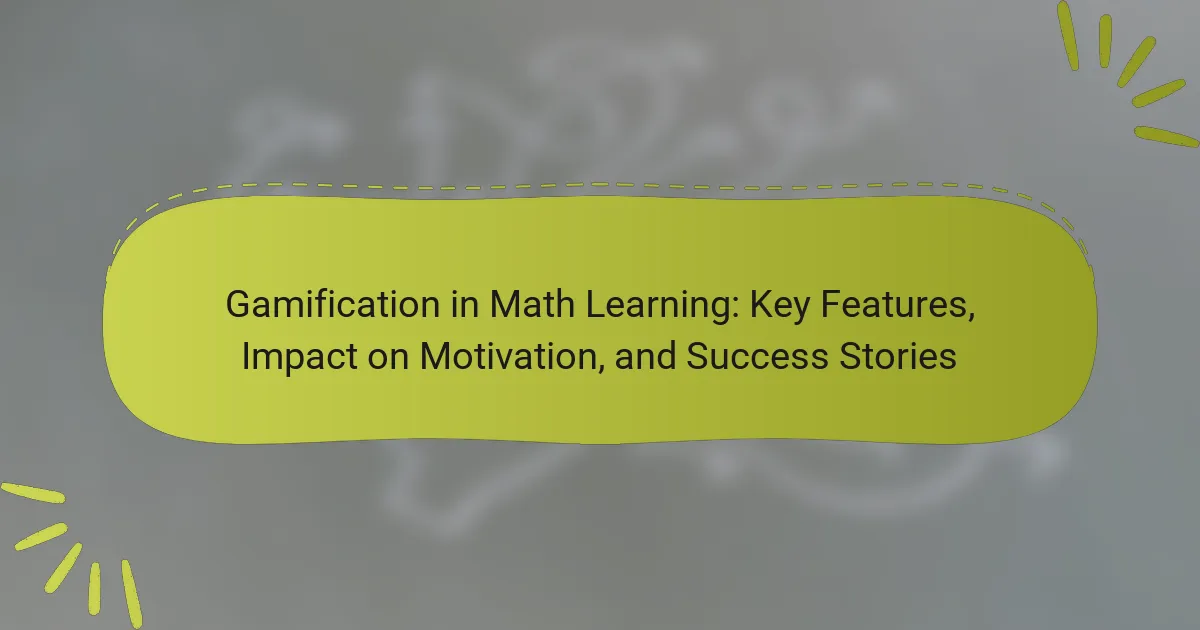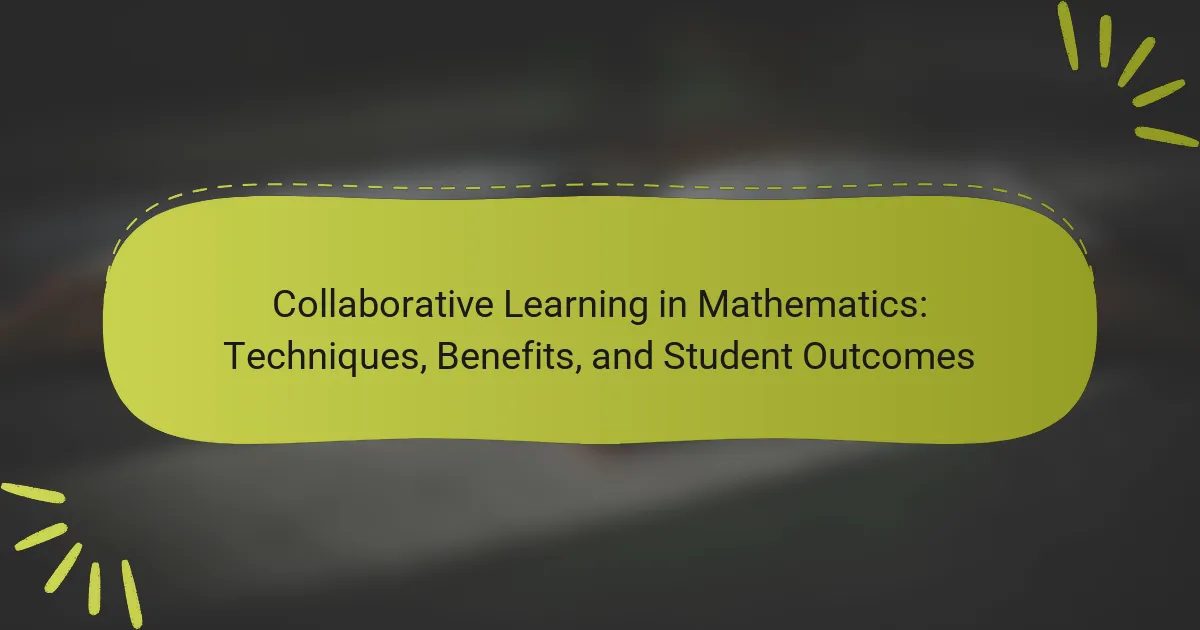The article explores the real-world applications of mathematics across various fields, highlighting its essential role in finance, engineering, healthcare, data analysis, computer science, and environmental science. It emphasizes how these applications enhance problem-solving skills, critical thinking, and student engagement in learning. By connecting abstract mathematical concepts to practical scenarios, such as budgeting and project-based learning, the article demonstrates the significance of math in everyday life and its impact on personal development. Additionally, it discusses strategies to foster student engagement, including the use of technology and collaborative group work, to create a dynamic learning environment that underscores the relevance of math.
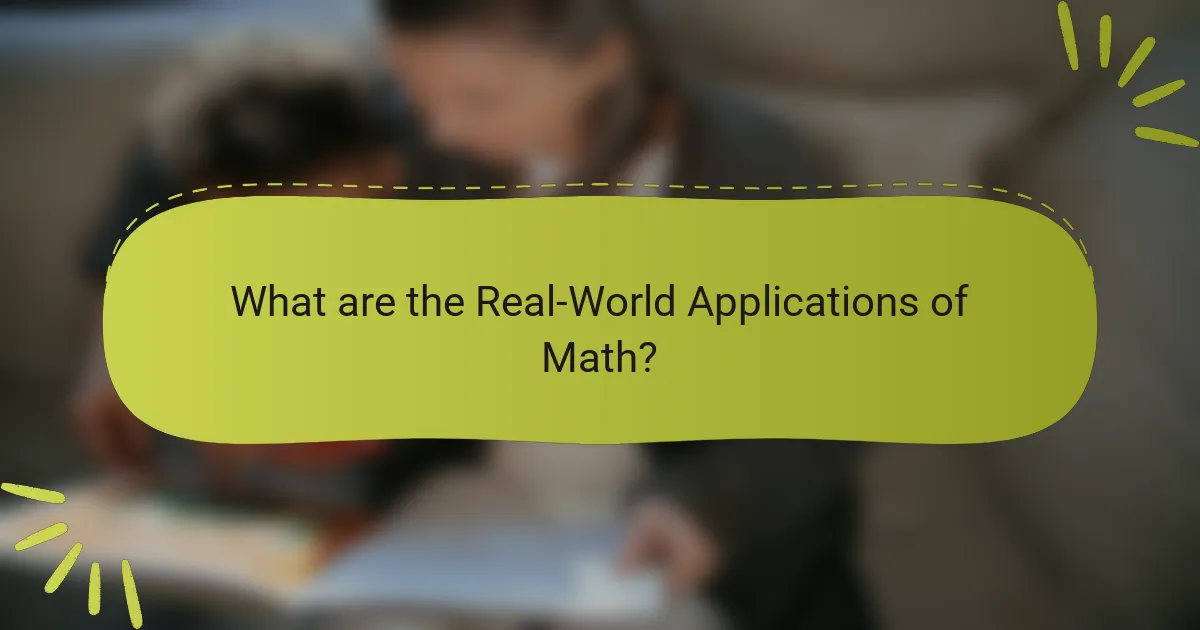
What are the Real-World Applications of Math?
Math has various real-world applications across multiple fields. In finance, math helps in budgeting and calculating interest rates. Engineers use math to design structures and systems. In healthcare, math is essential for medical imaging and drug dosage calculations. Data analysis relies heavily on statistical math to interpret trends. Computer science employs algorithms based on mathematical principles for programming. Environmental science uses math for modeling climate change and resource management. Overall, math is foundational in problem-solving and decision-making in everyday life.
How do real-world applications of math connect to everyday life?
Real-world applications of math connect to everyday life through practical uses in various activities. People use math to manage finances, such as budgeting and calculating expenses. Cooking often requires measurements and conversions, showcasing math in recipe adjustments. Construction relies on geometry for measurements and area calculations. Transportation involves math in estimating travel times and fuel consumption. Shopping necessitates math for calculating discounts and total costs. Healthcare professionals use statistics for patient data analysis. These examples illustrate that math is integral to daily decision-making and problem-solving.
What examples illustrate the use of math in daily activities?
Math is used in daily activities in various practical ways. Cooking requires measuring ingredients, which involves fractions and conversions. Budgeting for expenses involves addition, subtraction, and multiplication to manage finances effectively. Shopping often requires calculating discounts and comparing prices, which involves percentages and basic arithmetic. Time management involves scheduling and calculating durations, requiring an understanding of time intervals. Home improvement projects involve geometry for measuring spaces and calculating areas. Fitness tracking involves statistics to monitor progress and set goals. Each of these activities demonstrates the essential role of math in everyday life.
How does math play a role in various professions?
Math is integral to various professions by providing essential skills for problem-solving and decision-making. Engineers use math to calculate forces and design structures. In finance, professionals apply math for budgeting, forecasting, and investment analysis. Healthcare workers utilize math for dosage calculations and statistical analysis of patient data. Teachers employ math to develop lesson plans and assess student performance. Architects rely on math for spatial reasoning and creating blueprints. Data scientists analyze large datasets using mathematical models. These applications demonstrate the universal necessity of math across different fields.
Why is understanding real-world applications of math important for students?
Understanding real-world applications of math is crucial for students because it enhances their problem-solving skills. When students see math in daily life, they grasp its relevance. This connection fosters engagement and motivation in learning. Research shows that students who apply math concepts to real situations perform better academically. For example, studies indicate that students who learn through practical applications retain information longer. Furthermore, understanding math’s real-world uses prepares students for future careers. Many professions require math skills, making this knowledge essential for success. Thus, recognizing math’s practical applications equips students with necessary life skills.
What skills do students develop through real-world math applications?
Students develop critical thinking and problem-solving skills through real-world math applications. These skills enable students to analyze situations and make informed decisions. They learn to apply mathematical concepts to everyday problems. This practical application enhances their understanding of abstract concepts. Additionally, students improve their ability to communicate mathematical ideas effectively. They gain experience in collaborating with peers to solve complex problems. Research shows that students engaged in real-world math projects perform better academically. For example, a study by the National Council of Teachers of Mathematics highlights improved student engagement and understanding through practical applications.
How does math literacy influence career opportunities?
Math literacy significantly influences career opportunities. It enhances problem-solving skills and analytical thinking. Many industries, such as finance, engineering, and technology, require strong math skills. A study by the National Center for Education Statistics found that individuals with higher math proficiency tend to earn higher salaries. Employers often prioritize candidates with strong math skills for technical roles. Additionally, math literacy fosters critical thinking, which is essential in various job functions. As a result, math literacy opens doors to a wider range of career paths.

What are the Benefits of Real-World Applications of Math?
Real-world applications of math enhance problem-solving skills and critical thinking. They allow students to connect abstract concepts to practical situations. This connection increases engagement and motivation in learning. For example, using math in budgeting teaches financial literacy. Real-world scenarios make math relevant and applicable. According to a study by the National Council of Teachers of Mathematics, students perform better when they see the value of math in everyday life. Engaging with real-world math prepares students for future careers. It fosters a deeper understanding of mathematical principles. Thus, the benefits of real-world applications of math are significant for both education and personal development.
How do real-world math applications enhance problem-solving skills?
Real-world math applications enhance problem-solving skills by providing practical contexts for mathematical concepts. They allow individuals to apply theoretical knowledge to everyday situations. This application fosters critical thinking and analytical skills. When faced with real-life problems, students learn to identify relevant mathematical strategies. They become adept at breaking complex problems into manageable parts. Additionally, real-world scenarios promote engagement and motivation to solve problems. Studies show that students who use math in practical contexts score higher in problem-solving assessments. These applications bridge the gap between abstract concepts and tangible outcomes, reinforcing the importance of math in daily life.
What specific problem-solving techniques are developed through math?
Mathematics develops various specific problem-solving techniques. These techniques include logical reasoning, pattern recognition, and critical thinking. Logical reasoning allows individuals to deduce conclusions from given premises. Pattern recognition helps in identifying trends and relationships in data. Critical thinking fosters the ability to analyze situations and make informed decisions. Additionally, mathematical modeling enables the representation of real-world scenarios through equations and functions. Problem decomposition is another technique, breaking complex problems into manageable parts. These techniques are essential in fields such as engineering, finance, and science. Studies show that students who engage in mathematical problem-solving improve their analytical skills and academic performance.
How can these skills be applied in real-life scenarios?
Mathematical skills can be applied in various real-life scenarios such as budgeting, cooking, and engineering. For budgeting, individuals use math to track income and expenses, ensuring financial stability. Cooking requires measurements and conversions, allowing for accurate recipe preparation. In engineering, math is essential for designing structures, calculating forces, and ensuring safety. These applications illustrate the practical importance of math in everyday decision-making and professional fields.
In what ways do real-world applications of math foster critical thinking?
Real-world applications of math foster critical thinking by requiring individuals to analyze and solve complex problems. These applications often involve real-life scenarios that demand logical reasoning and decision-making. For instance, budgeting requires understanding numerical relationships and evaluating options. This process enhances problem-solving skills as individuals must weigh different factors and outcomes. Additionally, applying math in fields like engineering or architecture necessitates critical analysis of data and constraints. Research shows that students engaged in real-world math tasks perform better in critical thinking assessments. A study by the National Council of Teachers of Mathematics emphasizes the importance of context in mathematical learning. This context encourages deeper understanding and application of concepts.
What role does math play in decision-making processes?
Math plays a crucial role in decision-making processes. It provides a systematic approach to analyzing data and evaluating options. Quantitative analysis helps identify trends and patterns. Statistical methods assess risks and probabilities. Mathematical models simulate outcomes based on different scenarios. Financial calculations determine costs and benefits effectively. Decision trees visualize potential consequences of choices. Overall, math enhances clarity and objectivity in decision-making.
How can students practice critical thinking through math challenges?
Students can practice critical thinking through math challenges by engaging in problem-solving tasks that require analysis and reasoning. These challenges encourage students to evaluate different strategies and approaches. For instance, working on puzzles or real-life scenarios helps them apply mathematical concepts. As students navigate through complex problems, they learn to identify patterns and make connections. This process enhances their ability to think independently and creatively. Research indicates that students who tackle challenging math problems improve their critical thinking skills. A study by the National Council of Teachers of Mathematics found that problem-based learning fosters deeper understanding and analytical skills.
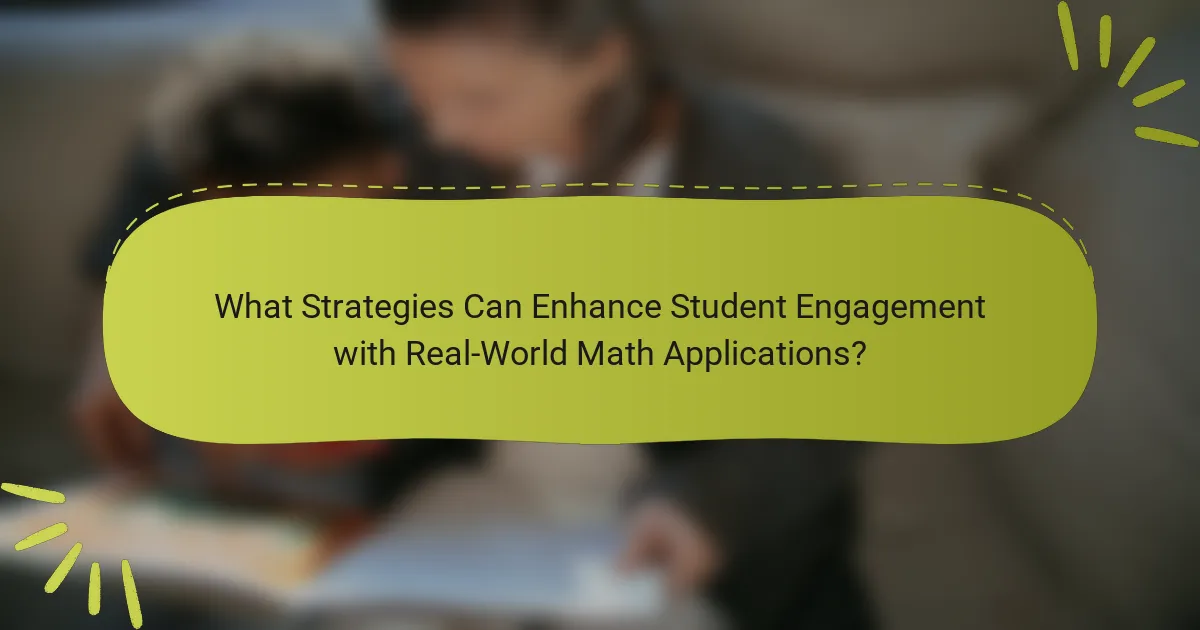
What Strategies Can Enhance Student Engagement with Real-World Math Applications?
Incorporating project-based learning enhances student engagement with real-world math applications. This approach allows students to solve practical problems, making math relevant to their lives. For instance, students can work on projects like budgeting for an event or designing a garden. These activities require the application of mathematical concepts, fostering deeper understanding. Additionally, using technology, such as math simulation software, can create interactive experiences. Research shows that interactive tools increase motivation and participation among students. Collaborative group work also promotes engagement, as students learn from each other. By discussing real-life scenarios, teachers can connect math to students’ interests. Overall, these strategies create a dynamic learning environment that emphasizes the importance of math in everyday situations.
How can teachers effectively connect math concepts to real-world scenarios?
Teachers can effectively connect math concepts to real-world scenarios by using practical examples. They can incorporate real-life data, such as statistics from sports or finance, to illustrate mathematical principles. For instance, teachers can analyze sports statistics to teach averages and percentages. This method shows students the relevance of math in everyday life.
Additionally, teachers can engage students in projects that require budgeting for a trip or planning a garden. These activities promote critical thinking and problem-solving skills. Research indicates that students retain information better when they see its application in real life. A study by the National Council of Teachers of Mathematics supports this approach, highlighting increased student engagement and understanding.
What teaching methods are most effective for engaging students?
Active learning methods are most effective for engaging students. These methods include group discussions, problem-solving activities, and hands-on projects. Research shows that students retain information better when they participate actively. A study by Freeman et al. (2014) found that active learning increases student performance in STEM subjects. Additionally, incorporating real-world applications enhances relevance and motivation. Engaging students through collaborative learning fosters communication and teamwork skills. Overall, these methods create a dynamic learning environment that promotes deeper understanding and retention.
How can technology be utilized to demonstrate real-world math applications?
Technology can be utilized to demonstrate real-world math applications through interactive simulations and modeling software. These tools allow students to visualize complex mathematical concepts in practical contexts. For instance, graphing calculators enable users to plot data and analyze trends in real-time. Online platforms provide access to real-world datasets for statistical analysis. Virtual reality can immerse students in environments where they apply math to solve real-life problems. Educational apps often gamify math concepts, enhancing engagement and understanding. Research shows that technology integration in math education improves student performance and motivation. A study by the National Education Technology Plan highlights the effectiveness of technology in enhancing mathematical understanding.
What role do collaborative projects play in student engagement with math?
Collaborative projects significantly enhance student engagement with math. These projects foster a sense of community among students. They encourage active participation and communication. Engaging in teamwork helps students develop problem-solving skills. Research indicates that students involved in collaborative projects show improved understanding of mathematical concepts. For instance, a study by Johnson et al. (2014) found that collaborative learning environments increase motivation. This motivation leads to higher academic achievement in math. Overall, collaborative projects create a dynamic learning experience that makes math more relevant and enjoyable for students.
How can group activities enhance understanding of math concepts?
Group activities enhance understanding of math concepts by promoting collaboration and active engagement. When students work together, they share diverse perspectives and problem-solving approaches. This interaction encourages deeper comprehension of mathematical ideas. Research indicates that cooperative learning improves retention and application of math skills. A study by Johnson and Johnson (1994) found that students in group settings performed better on math assessments. This improvement is attributed to peer teaching and discussion, which clarify complex concepts. Additionally, group activities foster a supportive environment that reduces math anxiety. Overall, collaborative learning experiences significantly boost math understanding.
What types of projects encourage teamwork and real-world application of math?
Collaborative projects that involve real-world math applications include engineering challenges, budgeting simulations, and data analysis tasks. Engineering challenges require teams to design structures or devices, applying mathematical concepts like geometry and algebra. Budgeting simulations involve managing finances, teaching students about percentages and arithmetic in practical scenarios. Data analysis tasks require interpreting statistical data, enhancing teamwork through collaborative problem-solving. These projects foster communication and critical thinking skills while demonstrating the relevance of math in everyday life.
What are some practical tips for integrating real-world math applications into the curriculum?
Integrating real-world math applications into the curriculum can enhance student engagement and understanding. Use project-based learning to connect math concepts with real-life scenarios. Encourage students to solve problems that reflect their interests, such as budgeting for a school event. Incorporate technology tools like simulations and apps that demonstrate math in action. Facilitate field trips to local businesses where students can observe math applications in various professions. Collaborate with community members to create relevant math challenges. Use data from real-world sources, such as sports statistics or environmental data, for analysis projects. These strategies actively involve students and demonstrate the relevance of math in everyday life.
Real-world applications of math serve as a vital link between mathematical concepts and everyday life, demonstrating their significance across various fields such as finance, engineering, healthcare, and data analysis. This article explores how math is utilized in daily activities, enhancing problem-solving skills and critical thinking, while also highlighting the importance of math literacy for career opportunities. It emphasizes strategies for engaging students through project-based learning, technology integration, and collaborative projects, showcasing the benefits of understanding math’s practical applications in fostering motivation and academic success. By connecting abstract mathematical principles to real-world scenarios, the article underscores the necessity of math in both personal development and professional environments.
